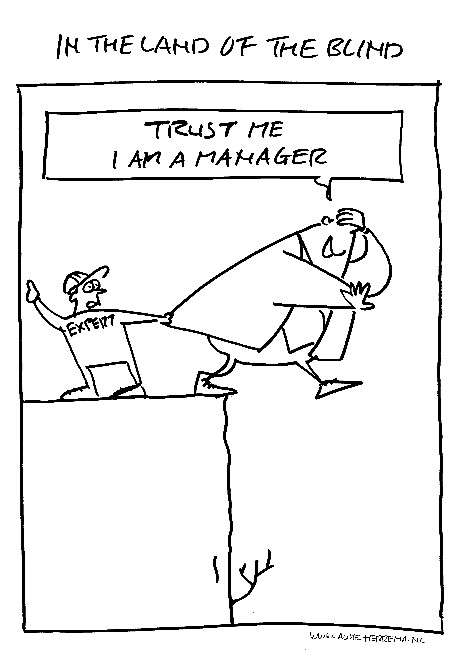The construction industry has had poor performance over the last decade. The following continue to be issues in the industry:

- Only 2.5% of construction projects globally have been defined as successful (scope, cost, and schedule).
- Only 30% of construction projects completed within 10% of planned cost & schedule.
- 25% to 50% waste in coordinating labor on construction projects.
- Management inefficiency costs buyers of construction between $15.6 and $36 billion per year.
- Rework by contractors is estimated to add 2-20% of expenses to a contractor’s bottom line.
- An estimated $4 billion to $12 billion per year is spent to resolve disputes and claims.
For references to these studies go to: http://pbsrg.com/publications/papers/
The Problem
In 1991, Dean Kashiwagi identified that the only difference between high performance and low performance in the construction industry was the ability of construction buyers to utilize the expertise of contractors. From his observations of the industry, he created the industry structure figure to explain the problem. Each of the four quadrants in the industry structure figure explain different environments in the industry. In the Price Based or low bid environment, risk is minimized by management, direction and control (MDC). In the Best Value Environment, risk is minimized by the utilization of expertise. The Best Value Environment is less expensive, transparent and more efficient. It uses the simple approach, hire experts and let them do their job.

Arizona State University – Home of PBSRG
The movement from the Price Based to the Best Value Environment requires doing the following:
- Minimize management, direction and control.
- Minimize thinking and decision making [when thinking and decision making is required, utilize expertise].
- Use metrics to identify what is going on, and minimize any directions on how to do the job.
- Hire based on expertise on the required project [how many times has the expert contractor done a similar project, what was their time and cost deviation, customer satisfactions, and what value was offered by the contractor].
- Minimize cost by allowing the best value contractor to preplan, create transparency and perform risk mitigation.
The solution to ensure high performance on procuring services is simple: utilize expertise. Hire an expert contractor. Then allow the expert to have full control of the service. Although the solution is simple and makes sense, buyers usually have many issues and questions with this approach. Some of these include:
- Giving up control. (People have a difficult time giving up the position of power.)
- Contractors taking advantage of the buyer.
- Being able to find an expert contractor.
- How do we know we are receiving a good deal?

These concerns are what has caused buyers to adopt the traditional or low bid method of procurement and project delivery. The only issue with this methodology is that buyers didn’t realize the impact of managing, directing, and controlling a contractor. The following are issues that arise from managing, directing, and controlling a contractor:
- When the non-expert creates the project, complexity and non-transparency increases.
- The more decisions a buyer makes, the more the buyer becomes accountable. As a result, the contractor is less accountable for the performance of the project.
- The more buyer management on a service, the less skilled the contractor’s workers need to be.
- When buyers tell contractors detailed service requirements it attracts and enables non-expert contractors to compete for their service.
- Hiring and maintaining in-house expertise requires a large amount of resources.
PBSRG developed a procurement and management model called the Best Value Performance Information Procurement System (BV PIPS) to help buyers overcome their concerns and be able to utilize the expertise of expert contractors.
The Best Value Performance Information Procurement System
The BV PIPS is the only system that enables the expert contractor to take control of the project. The system is made up of three major phases:
- Selection – The BV PIPS system selects contractors based upon their level of expertise and cost, and not a scope of work.
- Clarification – Once the contractor with the highest level of expertise and lowest cost is identified, then that contractor is brought into the clarification phase. It is then that the contractor will identify the scope of work and a plan to complete the project. The contractor is required to identify the final deliverables in terms of performance metrics and how they will measure their performance throughout the life of the project.
- Execution – Once a contract is signed the contractor will be responsible for turning in a weekly risk report (WRR). The contractor is required to document any deviations to their plan on this report and show continually updated performance measurements for the project.
The PIPS System

Using the BV PIPS system enables a buyer to procure a service without knowing what they need. They only need to know their high-level objectives and constraints. The system then requires that contractors know how to achieve the objectives, be able to meet the constraints of the client, explain to the client how they differentiate from other contractors, and convince the client that their solution will work.
The BV PIPS process enables the client to utilize the contractor’s expertise and still ensure contractor accountability, high level of expertise, and high performance through the following:
- The BV PIPS has cost controls built into the selection phase that eliminates contractors that cannot justify their pricing. BV PIPS projects have been found to save buyers around 30-40%.
- To ensure the contractor doesn’t take advantage of the buyer, the contractor is required to pre-plan the entire service before a contract is signed.
- During the selection and clarification phases, the BV PIPS requires contractors to submit verifiable performance information to identify their level of expertise and requires contractors to resolve all concerns and questions in a way that the buyer can understand and accept. If the contractor cannot do this, they are dismissed from the process.
- The client has the option of dismissing the selected contractor in the clarification phase, if its proposed scope of work does not meet the client’s requirements.
- The system through performance metrics creates transparency that ensures all parties know the status of the project at all times.
Does it Work?
Dr. Dean Kashiwagi, Director of PBSRG, created the Best Value Performance Information Procurement System (BV PIPS) in 1991. It has been tested for the last 25 years at Arizona State University (ASU) by his research group, The Performance Based Studies Research Group (PBSRG). The first test of the process was performed in 1994 to identify roofing systems and contractors for private companies. The success of the program caught the attention of the Dutch Ministry of Infrastructure, Rjikswaterstaat. They later used BV PIPS on delivering 1B euros of Dutch road construction in 2009. The system has been tested and refined over the last two decades. As a result, it has evolved from a selection process to include a project/risk management model. The system now encompasses the entire supply chain from a projects’ or services’ inception to the maintenance and completion.

The following are documented performance results of the Best Value PIPS system:
- The system is the most licensed technology at ASU with 47 licenses issued by the AZTech group.
- BV PIPS tests have been conducted in 32 states in the U.S. and seven different countries besides the U.S. [Finland, Botswana, Netherlands, Canada, Malaysia, Saudi Arabia, and India].
- The system has a documented performance over 1915 projects or $6.4 billion (1634 projects, $4B construction and 268 projects, $2B non construction) with a customer satisfaction of 9.8 (out of 10), 93.5% of projects on time and 96.7% on budget.
- The system’s most dominant result is from a test at ASU’s business services and procurement department. The PIPS system generated $100M of revenue based on the method in the first three tests, and currently receiving $110M a year from using the method.
- The system minimizes up to 90% of the buyers’ risk management efforts and transactions This is the only documented reduction in management in the construction management industry.
- The testing of the system has won multiple awards (i.e. 2012 Dutch Sourcing Award, 2005 CoreNet Global Innovators of the Year Award, the Hawaii 2001 Tech Pono Award for Innovation etc.).
For references to these audits go to: http://pbsrg.com/

The results of BV PIPS have been audited four times by a third-party group. These audits all confirmed that the performance claims of the BV PIPS were accurate. The four audits were: The State of Hawaii, The Zuyd University & University of Twente, US Army Corps. of Engineers, and Western States Contracting Alliance (WSCA) (former) & National Association of State Procurement Officials (NASPO). For references go to: http://ksm-inc.com/the-best-value-approach/legality-best-value/
Get Educated!
The Performance Based Studies Research Group provides a variety of educational offerings to meet everyone’s need to learn more about the Best Value PIPS model such as:
- Year-round on-line courses available wherever you are located.
- On-sight professional development training (ideal for professional associations or companies) customized to fit your needs.
- Guest speaker or keynote for conferences, seminars, workshops, annual meetings, etc.
- Hands on training or implementations where your entire team can be walked through every step on an actual project this includes contractor training.
- Annual conference – 4 days every January in Tempe, AZ to learn everything there is to know about the best value model and receive the latest books.
For more information about educational offerings, contact [email protected] or (480) 965-1252




